Chasing the Light at White Sands National Park
![]()
America’s national parks are a true source of pride. Each is unique in what it offers and this is certainly true of one of the more off-the-beaten-track parks.
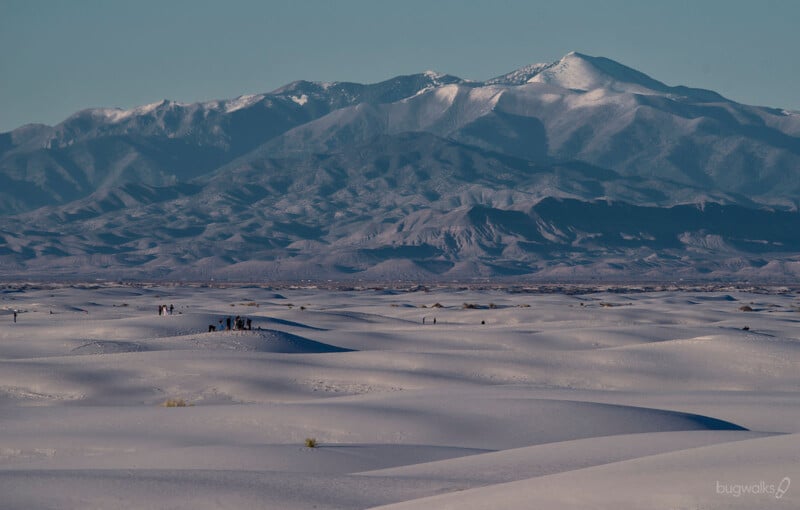
Many visitors are there to hike, picnic, and generally enjoy playing in the pure white, gypsum sand dunes. Sliding down the steeper dune faces is one of the more popular pastimes for young and old alike. For photographers, White Sands is a dream location. In general, sand dunes are a wonderful photographic subject but the bright white color of the sand adds another dimension. The reflected light over the course of the day affects the color hue of the dunes in a way you do not see at similar locations.
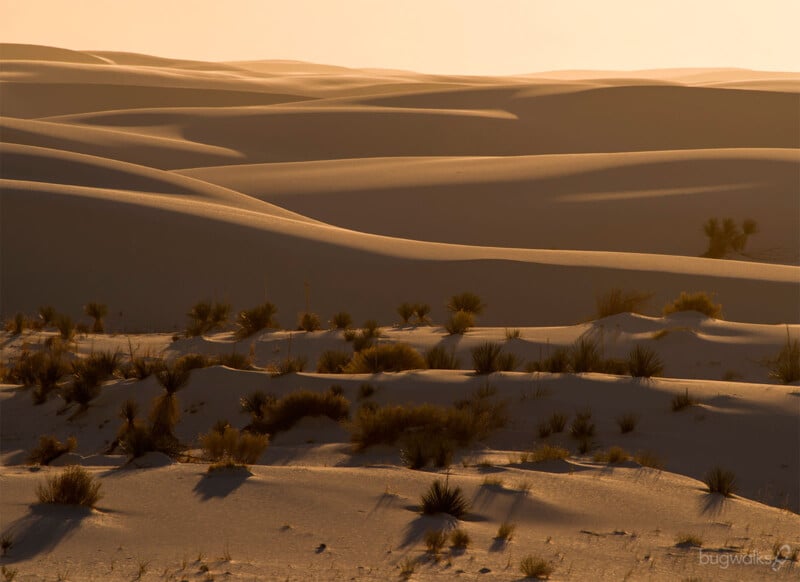
Chasing the Morning Light
The park opens at 7 am so in most cases it is not possible to be there for sunrise. However, the low-angle morning light can add nice highlight and shadow areas that define the shape and textures of the dunes. The prevailing winds at White Sands blow from the west so the sand forms wedge-shaped dunes with the steep slopes generally facing east. The morning light will illuminate these steep faces and leave the gradually sloping backside in the shadows.
The early light works best with the taller dunes found in the northern part of the park. Try to get there early before other visitors arrive and the sand is marked up with footprints. Mornings at the park can be very cold because of its elevation of 4235 feet. Wear layers of clothing that you can peel off as the day warms up.
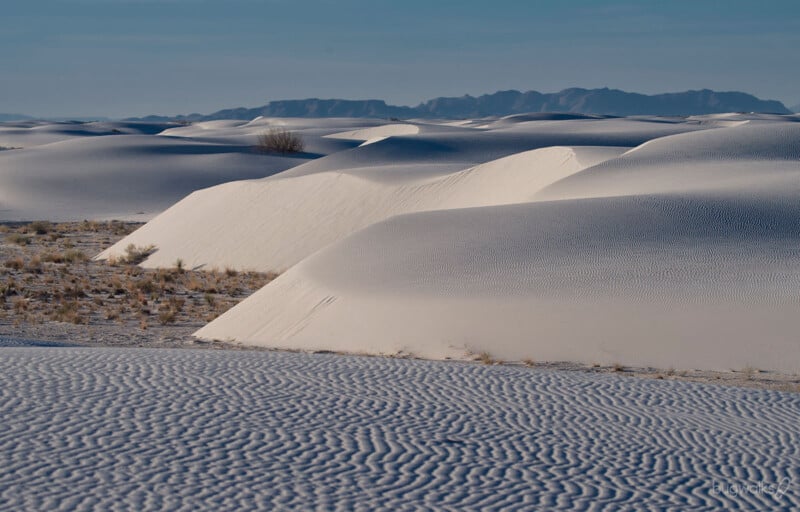
Chasing the Late Morning Light
As the sun rises higher in the sky the contrast between the highlights and shadows begins to fade into a much flatter light. This is a good time to focus more on more intimate images of the plant life, patterns in the sand, and possibly wildlife.
In between the dunes are flats referred to as “interdune areas” where the moving dunes and water have created interesting patterns on the desert floor. These areas hold the majority of the plant life that struggles to survive here. My personal favorites were the desert yucca which worked great for a fitting foreground element.
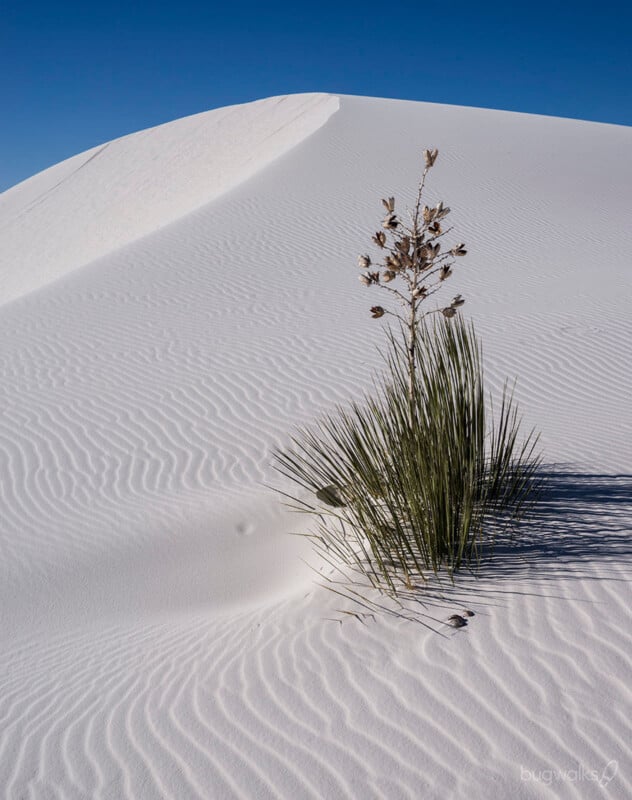
This is also a good time to wander the dunes looking for potential sunset locations. Look for unique landmarks (like the occasional rare tree) to help identify these spots as the repeating dune formations make it easy to lose track of your location. The main access road generally runs north through the park so this is a good starting landmark. Cell service is a bit spotty on the dunes so you may not be able to mark locations on your cell phone.
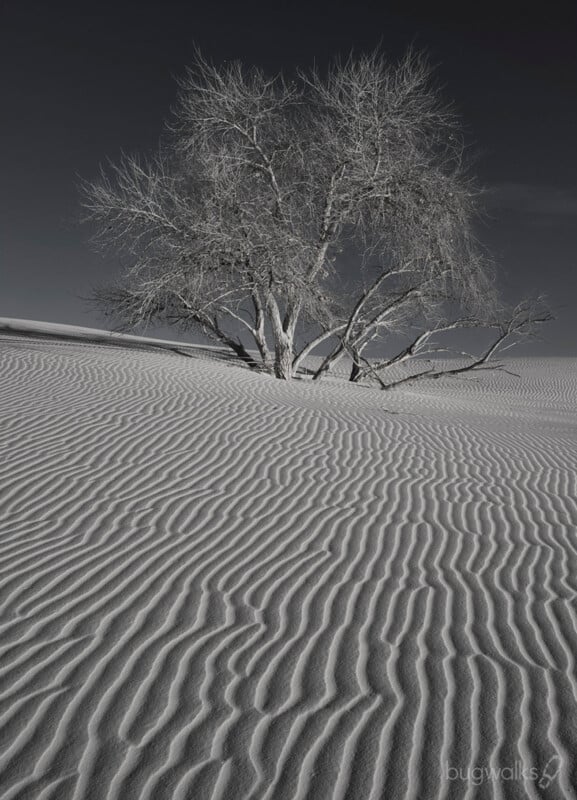
The desert location of the park means that it can get quite warm during the day. Be sure to bring sunscreen, sunglasses, and plenty of water. Many visitors will check out the park visitor’s center or drive to Alamogordo for lunch during the midday.
Chasing the Sunset Light
For most photographers, the best time to be on the dunes at White Sands is the late afternoon and up until park closing. The setting sun leaves the dune faces in the shadows highlighting the top edges and soft back slopes. It works well to set aside the wide-angle lens in favor of a telephoto zoom lens so you can pick out the interesting patterns and textures the light creates across the dunes. Perch yourself on the top of a high dune and slowly spin around while looking through the viewfinder. A tripod may be useful at this point to help steady long telephoto shots.
These conditions get the creative juices flowing and you will see interesting compositions in every direction.
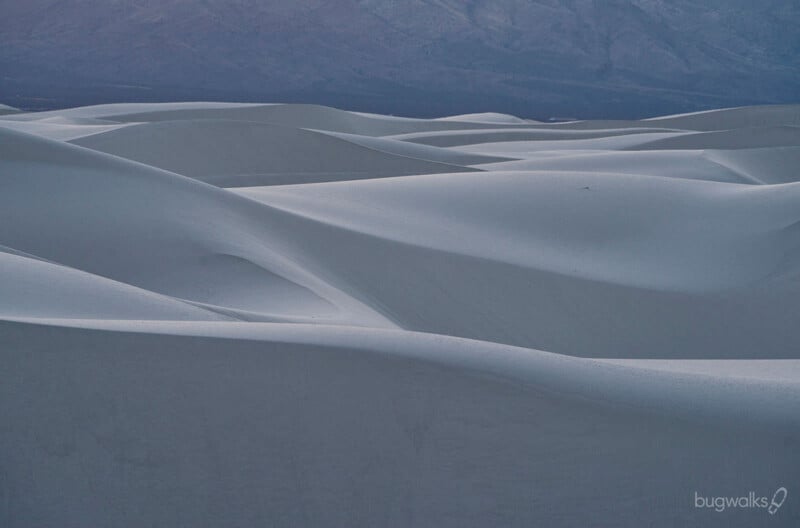
The San Andres mountains lie directly west of the park so the sun will move behind them putting most of the park in the shadows 20 to 30 minutes before the actual sunset. Keep this in mind when getting out to the sunset locations you may have scouted earlier. Incidentally, you will find it impossible to climb the steep dune faces so plan on some extra time to find ways to get to the best spots.
It was fun to play with images looking directly toward the sun. The highlights created on the top edges of the dunes along with a darker exposure made for compelling photos. A lens hood was essential for these images to reduce glare.
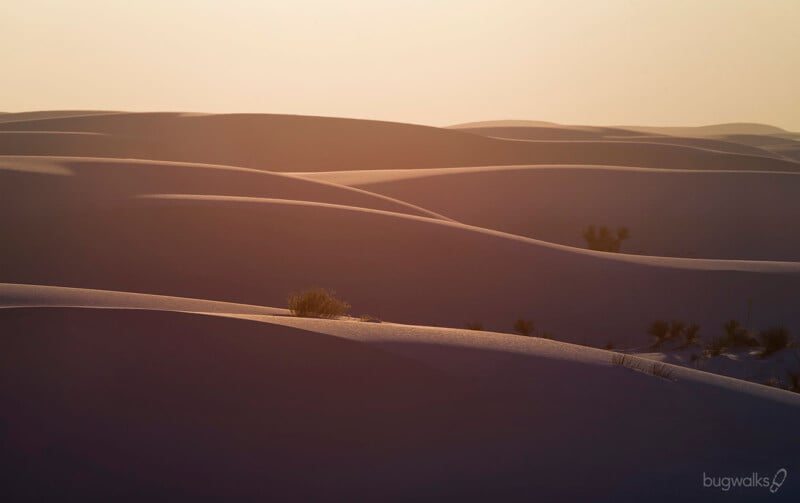
Once the sun sets behind the mountains watch for sun rays coming through the gaps in the hills. Airborne dust catches the sun creating shafts of light that make for great areas of highlight versus shadow contrast.
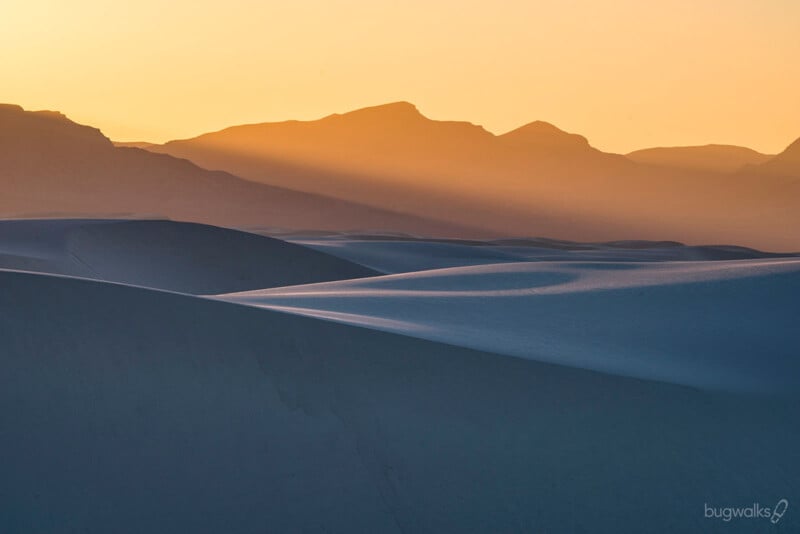
The arid environment at White Sands means that clear skies are the norm. If you are lucky some high clouds will move into the area in time for sunset. Desert sunsets usually guarantee some great color and the sand will take on the pink and magenta hues of the sky.
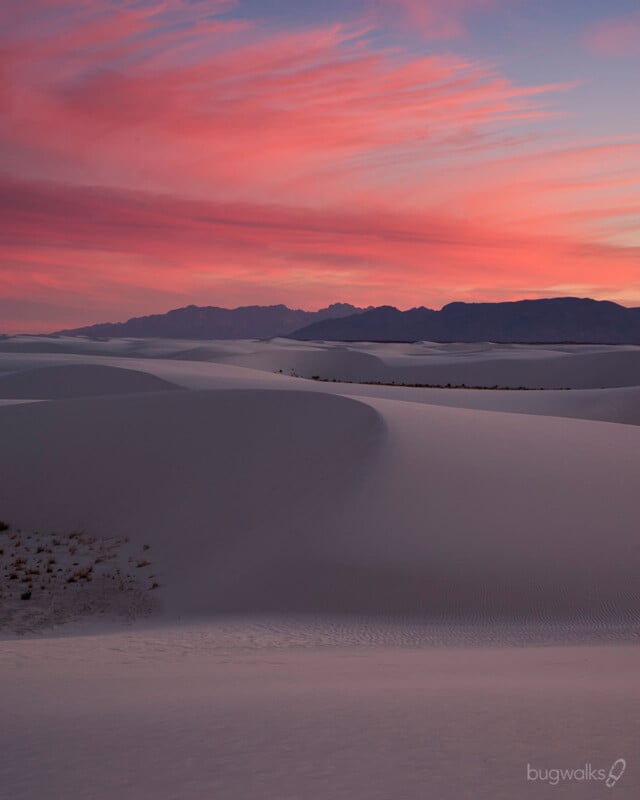
Once the color in the sky begins to fade you will need to start making it back to your car to exit the park. Closing times are seasonal and vary between 6 pm and 8 pm. Park rangers will patrol the main road and parking lots to make sure everyone is headed toward the exit. At the time of this article, overnight camping was not allowed. This is unfortunate as White Sands happens to be a dark sky area and photographing the night sky there would be incredible. Hopefully sometime in the future this will change.
Preparing to Chase the Light
While photographing at White Sands is a fairly normal landscape situation, there are a few points to consider when visiting.
It may be possible to enter the park slightly before opening if a ranger is present at the gate. Don’t count on this happening but if you arrive early at least you can beat the majority of visitors.
If you plan to enter the park more than three times during your visit consider buying a National Park annual pass. It saves time at the gate and pays for itself very quickly.
Treat the sand like snow when it comes to sun exposure. Sunscreen and sunglasses are a must.
My favorite images came from the area accessible from the parking lot roughly 1 mile north of the Sunset Stroll trail. Cross the main road and go west towards the San Andres mountains. This area and further to the north have the tallest dunes and the least amount of vegetation. The nature trail closer to the park entrance features smaller dunes and more plant life, and it highlights the park’s diverse environment.
If you have photographed on dunes before then you know that your camera gear will be vulnerable. Changing lenses while on the dunes is not a good idea since the wind is usually always blowing at White Sands. My approach was to start off with a 150-450mm zoom lens mounted to my camera body and have a 24-70mm zoom at the ready if changing lenses was really needed. If the local weather forecast calls for high winds you may want to save photography on the dunes for another day if your schedule is flexible.
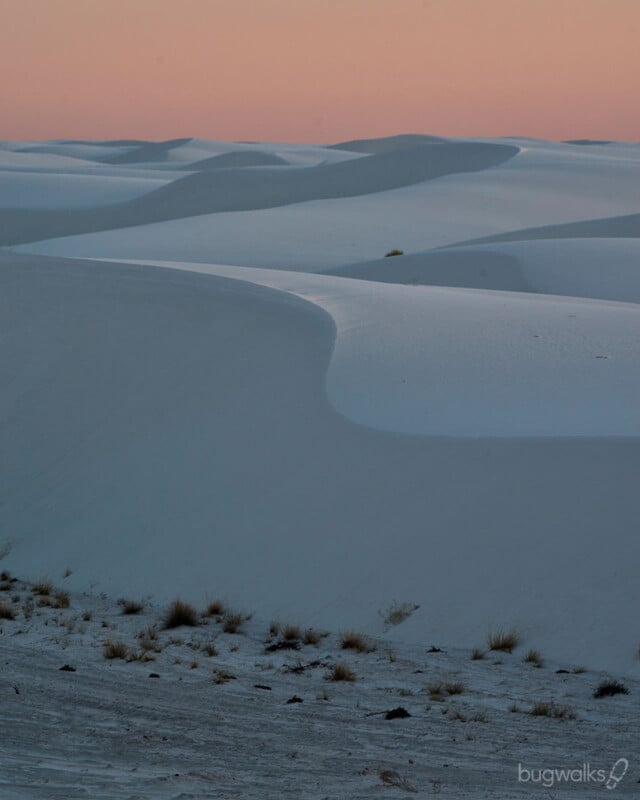
You will find photographing at White Sands National Park to be worth the effort given its off-the-beaten-path location. It is truly a wonderful jewel in the southern New Mexican desert.
About the author: Curtis Smith is based in Kingston, Washington, and is a longtime Pentax shooter. He enjoys photographing out of airplane windows and sipping a nice stout while watching the sunset. You can see more of his work at bugwalks.com or check out his feed on Instagram.